Dear Colleagues,
Welcome to the July edition of the THS Newsletter.
Had things been normal we would just be recovering from the 24th Thomas Hardy Festival and Conference, but at least its rescheduling to July 2021 is something to look forward to; and perhaps, whilst we're at it, we'd better get the rest of the bad news out of the way:
Firstly, we have just been notified that the Dorchester Literary Festival has become a casualty of the Covid virus; this means that THS activities related to the Festival have had to be cancelled - so, there will be no walk on Sunday 11th October and no Hardy landscape talk on Tuesday 13th October. Also, the WHOTT (The West Country Historic Omnibus & Transport Trust) Running Day scheduled for Sunday 16th August has been cancelled. The Study Day, the AGM and the STAND Walk (see below) are still in play for the moment, as is the London Lecture. Watch this space for further developments.
In this edition we have we have articles by myself (who thought readers might be interested in what life was like at Max Gate), Alban O'Brian and one of Jerry Bird's 'A Bibliophile's Dorset' vignettes. We hope you will find them interesting.
Alban has just come up with an excellent idea which I think readers might wish to participate in; he suggests that he should write a piece about how he was 'turned on' to TH; I have a story about that and I'm sure many of you do too. If you would like to write them up and send them in we could feature them in future editions of the newsletter.
Send your contribution to
info@hardysociety.org
A Max Gate Memoir
1. The Keys to Max Gate
….and how to acquire them.
Readers may, or may not, know that your editor (that’s me, Andrew Leah) and my wife Marilyn, were the last tenants of Max Gate. We lived there for just short of seventeen years, from February 1994 to October 2010.
The first question friends and visitors alike asked was ‘ How on earth did you end up living here?’ and the answer was always – ‘Entirely by accident!’ But thinking back it was a most Hardyean accident – a tiny thing, a phrase, which led to a momentous change in our lives. I’ve always said that TH was one of the inventors of ‘Chaos Theory’ – the notion that a small, insignificant event or action could lead to an outcome out of all proportion to the original tiny trigger. Our experience was not on the level of Parson Tringham’s greeting ‘Good evening, Sir John’, which led Tess inexorably to the gallows, of course; but, nevertheless, it followed a similar path and hung by a thread through the whole process.
We were sitting in our small ‘pied-à-terre’ in Bournemouth; Marilyn was scanning the small ads in the Bournemouth Echo, when she suddenly exclaimed, ‘Oh, I’ve always wanted to look round that house!’ and showed me this advertisement:
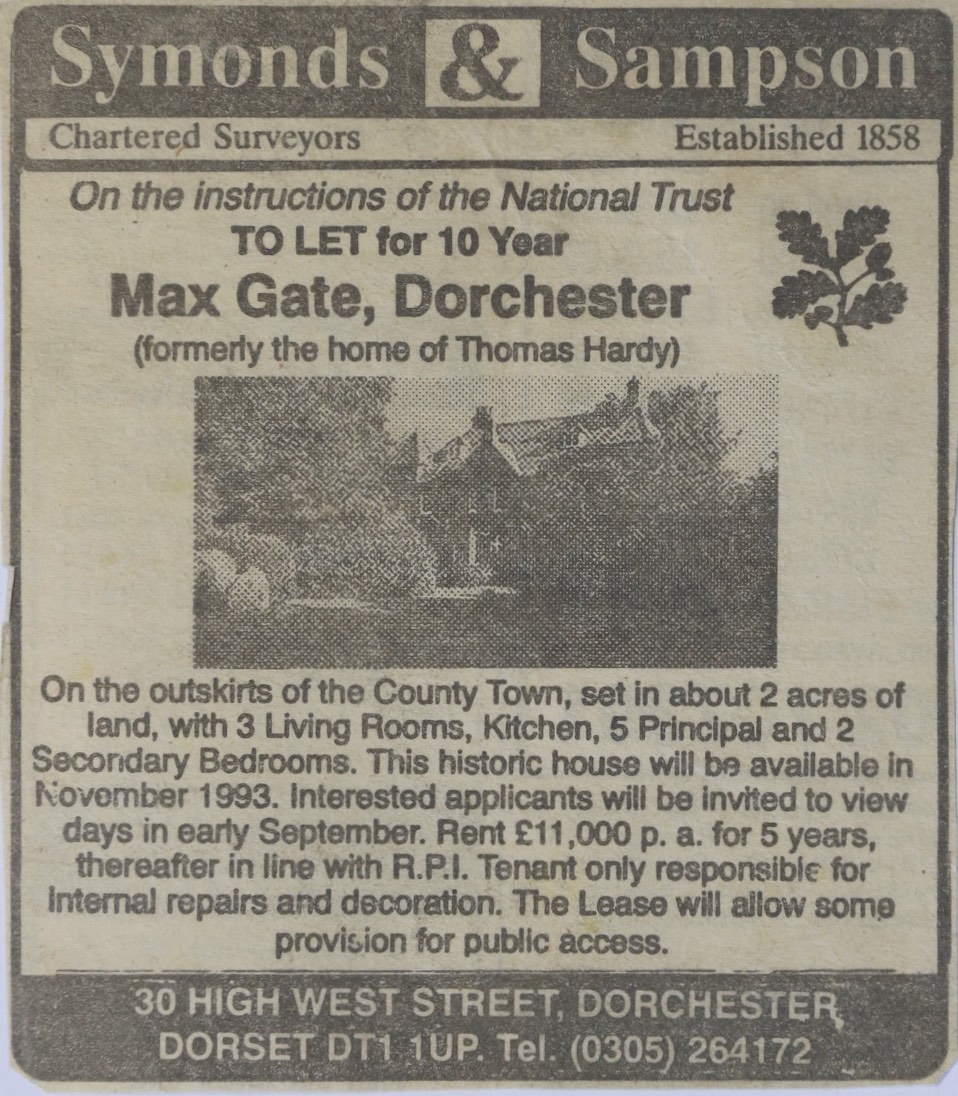
I said, jokingly, that if she wanted to look round the house I would apply, and she said she would - so I applied. We received a brochure with further details from Symonds & Sampson, and an invitation to attend a viewing of the house on Friday 24 September 1993. I had a meeting that day so Marilyn had to go alone – she backed to the end of our drive, stopped, then drove back in again, got out of the car and said, “I’m not trailing down to Dorset just to look at a house we’ll never live in!’ I told her that we were going down anyway for the weekend and if she didn’t go she would always wonder what might have happened; so she headed off down to Bournemouth, picked up my mother for moral support and the two Mrs. Leahs descended on Max Gate. They thought there would be crowds of people there, but it was just the two of them – and they were late! Max Gate has always been difficult to find. Bill and Vera Jesty, the tenants at the time, showed them round the house and grounds and the two visitors came away with a very favourable view of it. Ivan Smith, the NT Land Agent for the area said that if we wished to proceed we should write a letter of application and attend an interview should it be accepted. Bill and Vera kindly said they would show me round, too, when I came down the following day, so we took them up on their offer and I got to see the house. I have to say I fell in love with it immediately; at that time I knew nothing of the house's reputation.
Surrey County Council had recently taken the decision to close its four Staff Development Centres, one of which I headed, so at the end of July ’93 I found myself redundant and wondering what to do with the rest of my life. Max Gate suddenly looked an interesting proposition. We had both been ‘in education’ for most of our working lives (Marilyn was then Principal Lecturer in Education at King Alfred’s College, Winchester) and I had been a fan of Hardy’s poetry since the age of thirteen We could see educational potential in the house, so we decided to go ahead with an application, not thinking for a moment that we might be successful.
To our surprise we received an invitation to attend an interview at Queen Anne’s Gate, the NT Headquarters in London, on the 24thOctober. On the 23rdOctober the IRA obligingly bombed Reading Station and the West Country interviewers were unable to get to London, so the interview was postponed for a week and moved to Clandon Park near Guildford. In the interval we received a copy of the lease, which more or less stated that you could cross the threshold and breathe, provided you did so carefully. I took the lease to my solicitor friend who lived at the bottom of our garden and we went through it with a fine toothcomb and a yellow highlighter. He had clashed with NT lawyers on several occasions and was thoroughly anti – ‘Oh, can’t have that,’ he said, ‘or that, or that….’. When we’d finished the document was a mass of yellow highlighter and pencilled notes. The interview consisted of us laying out our Hardy ‘credentials’ such as they were, to Ivan Smith, the land agent, and his colleague - in which neither was the least bit interested – and going through the lease saying, ‘We can’t have that… or that… or that…’. Ivan, who later became our good friend, just said, ‘Don’t worry about that, that’s just lawyer-speak; if you’re successful we’ll look after you!’, and, bless him, he did!
A week later we went to Norway for a friend’s 50th birthday party without having heard anything from the National Trust. While we were there Marilyn phoned Bill and Vera at the house to see if they had heard anything. Vera’s first words were ‘Congratulations, you’ve got the lease.’ We whooped our way around Kare and Lisbeth’s house and had a double celebration!
Next time: Arriving at Max Gate.
Andrew Leah
A Max Gate Memoir
2. A Very Suitable Boy.
I put this in, at this point, because Vikram Seth’s novel, A Suitable Boy, has just made a dramatic appearance on BBC1 and it reminded me of Vikram’s visit to Max Gate in 1999.
It was a quiet afternoon, we had an American student and a couple of others in the house, when a slim, quite short Indian gentleman and a tall man with a French accent, walked through the front door. The Indian gentleman certainly knew his Hardy, and like me, was particularly fond of the poetry. I had no idea who they were, but both exuded ‘presence’ and were polite and charming. The Indian gentleman asked if it would be possible to see Hardy’s study, which, back then, was not open to the public. We trooped up the stairs, followed by the American student, and the couple of others chancing their luck. I recited ‘An August Midnight’ to them and we talked about Hardy and poetry for some twenty minutes. On the way downstairs the American student said to the Indian gentleman, ‘My tutor tells me I should read your book.’
I had noticed that they had both had signed the visitors' book earlier, so I sidled over to it to see who they were – Vikram Seth and Philippe Honoré – and then pretended I’d known all along! The two were both charming and very funny; Marilyn confessed to Vikram that she had started A Suitable 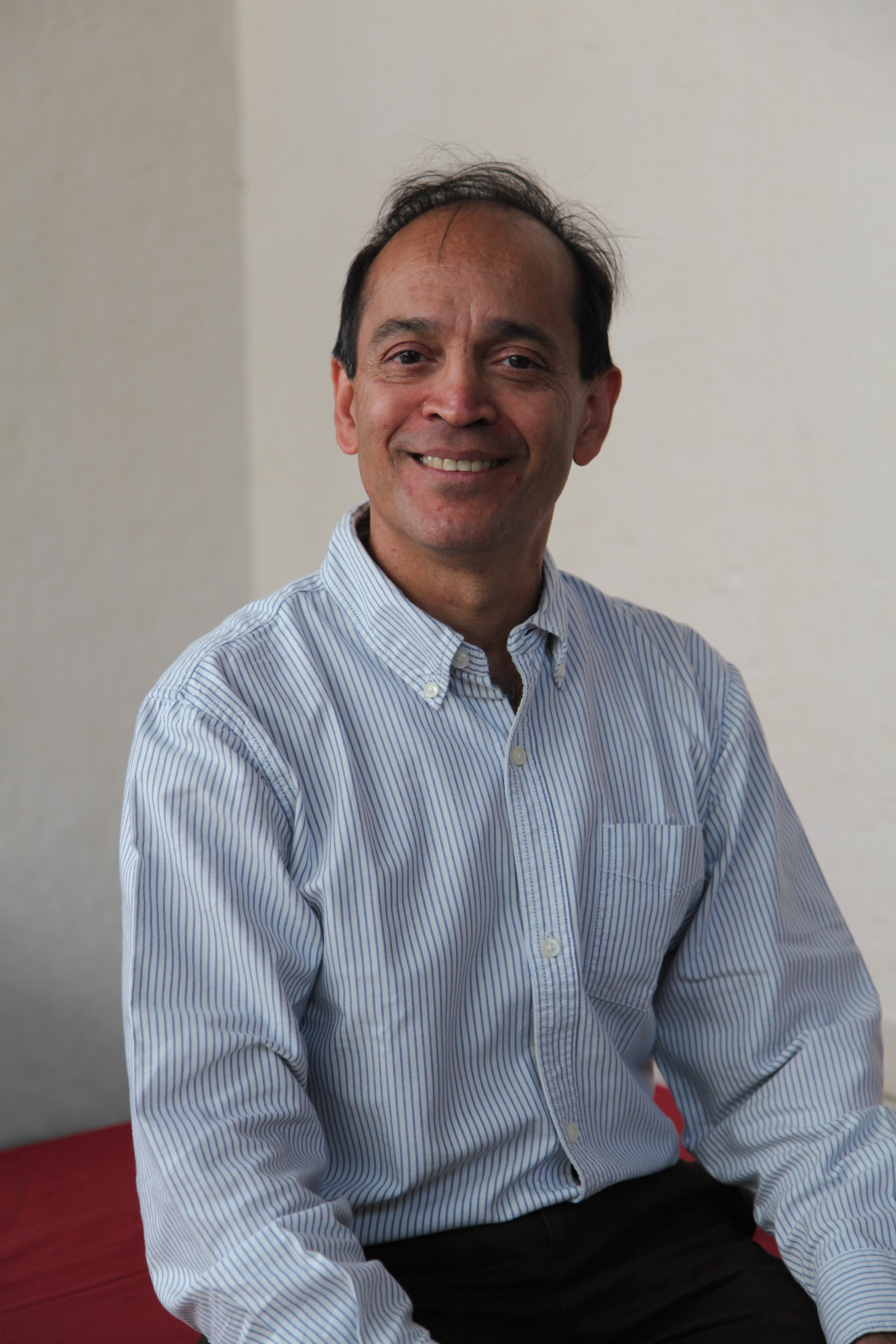 Boy twice but couldn’t get to the end of it. He laughed and said, ‘Well, if I hadn’t written it, I probably wouldn’t have read it either.’ He had just published An Equal Music, a novel inspired by Philippe Honoré, the French violinist, who had contributed the musical background to the story and a CD of the music featured in it. It was novel about which Furse Swann waxed lyrical and one which we did read and enjoy.
Boy twice but couldn’t get to the end of it. He laughed and said, ‘Well, if I hadn’t written it, I probably wouldn’t have read it either.’ He had just published An Equal Music, a novel inspired by Philippe Honoré, the French violinist, who had contributed the musical background to the story and a CD of the music featured in it. It was novel about which Furse Swann waxed lyrical and one which we did read and enjoy.
Finally he bought a Max Gate postcard to send to his mother in India, who, he said, would be delighted to hear that he had visited Thomas Hardy’s house.
The two went on their way leaving us all feeling uplifted – such moments at Max Gate were truly priceless.
Andrew Leah
...so Michael Henchard was not the only fictional character to tread the streets of Dorchester!
A Bibliophile's Dorset 161
KINGS ARMS, DORCHESTER
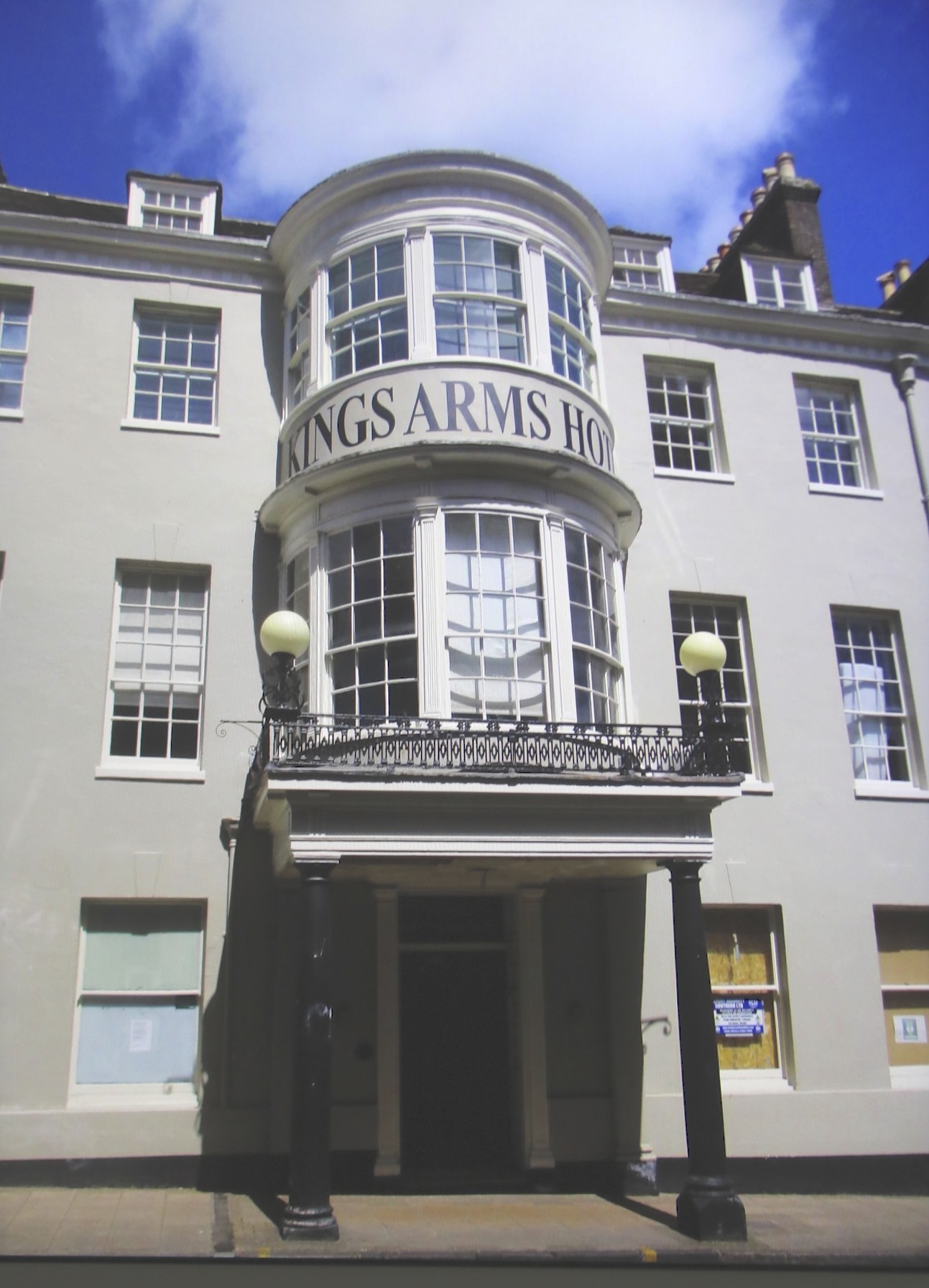
Morse was spending the last three days of his West Country holiday at the Kings Arms in Dorchester (Dorchester, Dorset). Here he encountered neither models nor beauticians, but at last he began to feel a little reluctant about returning to Oxford. On the Wednesday he had explored Hardy’s Dorchester on foot (!) a.m., and spent the whole p.m. in the Dorset County Museum. Nostalgic, all of it. And when finally he returned to ‘the chief hotel in Casterbridge’ he sat drinking his beer in the bar before dinner with the look of a man who was almost at ease with life.
Colin Dexter, The Way Through The Woods 1993
Jerry Bird
Readers may be interested to know that the King'd Arms has been fully refurbished before and during the Covid crisis, is now advertising for personnel and will be opening in the not-too-distant future. It will certainly be available for the 2021 Conference, so book early if you are thinking of coming!
THOMAS HARDY AND 'THE DAME OF ATHELHALL'
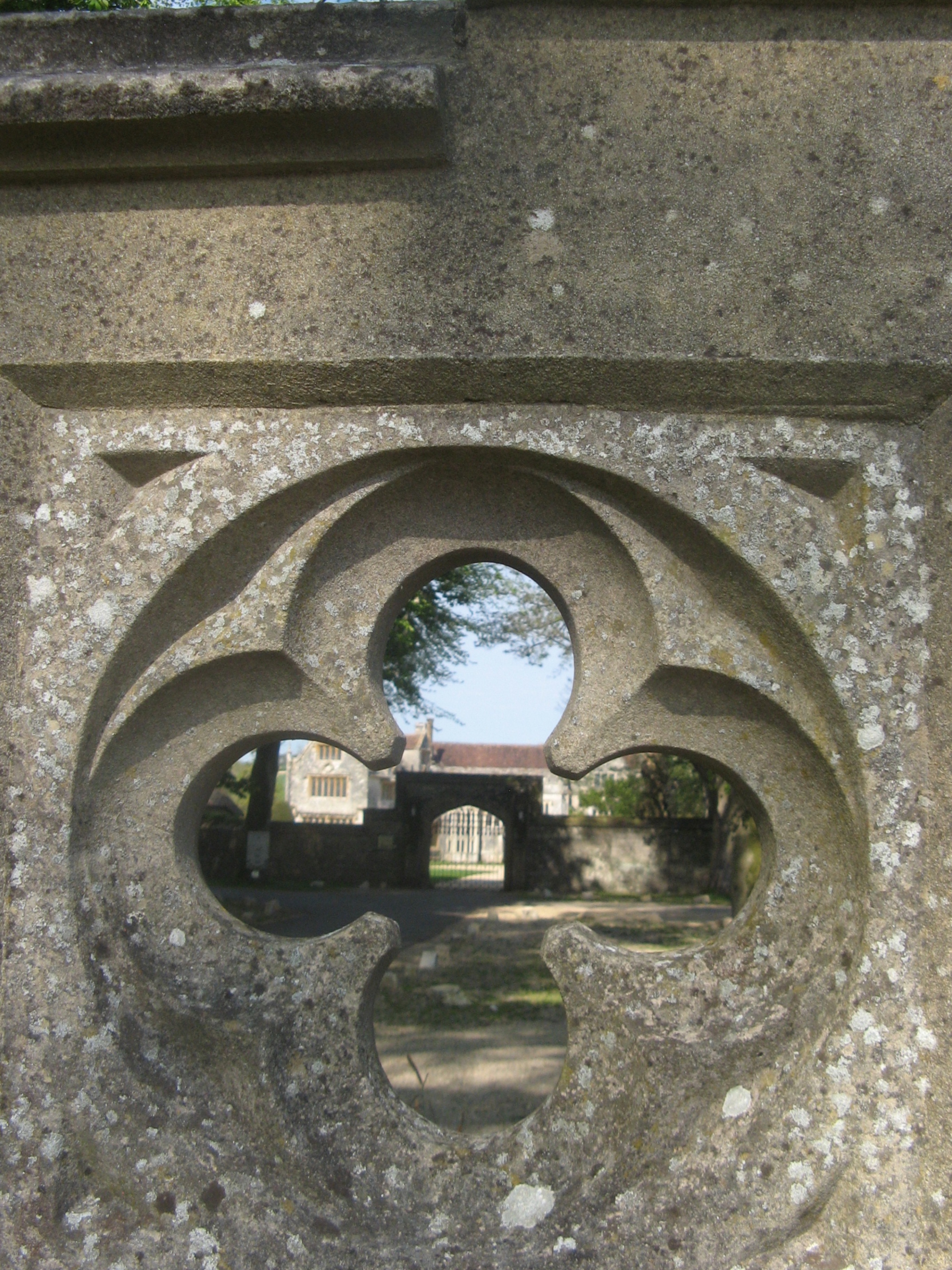
Whether as part of a walk from Puddletown, or as a separate visit by car or bicycle, a visit to Athelhampton is a must. There was a manor at Athelhampton as long ago as the Normans, but it was Sir William Martyn who began the building of the manor we know today in 1485 and were lords of the manor for the next one hundred years. We have already met the family in the south chantry of Puddletown church even if in alabaster rather than flesh and blood. Over the centuries the house expanded, the local area farmed and its ownership passed down through the generations by marriage. By 1848 the house in a state of some disrepair was sold to George Wood, and then until 1918 to the de La Fontaine family whom we have also met at Puddletown church. For the rest of the 20th and early years of the 21st century the house exchanged hands with the current owners taking over in 2019. They are keen to promote the house’s connections with Thomas Hardy of which there are a good number, have an interesting Hardy related website and recently created a film with the New Hardy Players to show what Athelhampton would have been like when Hardy knew it.
There are first of all the biographical connections. Hardy would have known of Athelhampton and he would have known of the Martyns of Puddletown. He may have been struck first of all by the similarity in names between the famous former owners of Athelhampton and that of his first teacher and arguably first love, Julia Martin. She was the wife of Francis Pitney Brouncker Martin who had bought the house at Kingston Maurward closest to his Higher Bockhampton home, distant relatives according to some. In 1859 the poet’s father, also called Thomas Hardy, was employed as a master mason and builder to undertake some of the work of restoration and extension that George Wood undertook after buying the dilapidated house in 1848. At the time of his involvement Hardy was a nineteen year old apprentice architect working for John Hicks of Dorchester. He is known to have completed a watercolour painting of the Athelhampton gate house, since demolished, and as we have said above was involved in the architectural design of the new church in 1862, another of George Wood’s projects. It was later however when the house was owned by the La Fontaine family, between 1890 and 1918 that Thomas Hardy, now an established author whose status had risen in the world, visited Athelhampton most often. He and his new wife of six months were dining at Athelhampton on 4 August 1914 when war was declared. The De La Fontaine’s had received a telegram to that effect. It would not be the first either for the De La Fontaines or for the Hardys who both lost the heir to their home and fortune in the first world war, as discussed at the memorial stone on the hillside mentioned above and in the reference to the La Fontaine plaque in the church at Puddletown. In an earlier poem he had recalled the shock of that moment of revelation when shocking news arrives suddenly by telegram
A messenger's knock cracks smartly,
Flashed news in her hand
Of meaning it dazes to understand
Though shaped so shortly:
He—he has fallen—in the far South Land…
This referred to the news received by a wife in London (also the title of the poem) when she received news of the death of her husband in an earlier war of 1899, but the shock can have been no less palpable at the time of the Great War.
Given his affiliations with the house it would be surprising if he did not make some reference to it in his writings, and indeed he does. As we have said though Hardy had a tendency to mix and match details of the buildings he chose and to move their locations if it suited him. Endelstow House in his 1873 novel A Pair of Blue Eyes is most obviously based on Lanhydrock House in Cornwall but not surprisingly also bears many features which were to be found closer to home. As Kay-Robinson has pointed out, ‘Endelstow House had mullioned dormer windows, surmounted, like the gables, by grotesque figures; tall ‘octagonal and twisted’ chimneys, surpassed in height, however, by the trees behind them; polygonal bays in the angles of the court, their surfaces ‘entirely occupied by buttresses and windows’; and over the main entrance a far projecting oriel springing from a fantastic series of mouldings’. Lanhydrock has none of these features. However, with the exception of the twist in the chimneys and the gate house with its oriel window which Hardy had painted but which is now no longer there, all these features can be found at Athelhampton today. His keen architects eye and visual memory had stored up these features from what must have been several visits on architectural work either here or at the church. It may have been while he was working for John Hicks that his name was inscribed in the leadwork of the Dovecote.
In
Far From The Madding Crowd Bathsheba’s manor house is primarily based on the Waterston Manor about a mile outside Puddletown. Like the Weatherbury Farm of the novel the manor house at Athelhampton was also associated with farmland which belonged to it. There were at one time 12000 acres of farmland and not all it in the immediate vicinity around the manor. When the harvest was over the farmhands gathered for the huge celebration known as the harvest supper. In Far From The Madding Crowd this takes place in the great barn modelled on that in Cerne Abbas, or Abbotsbury, or both.
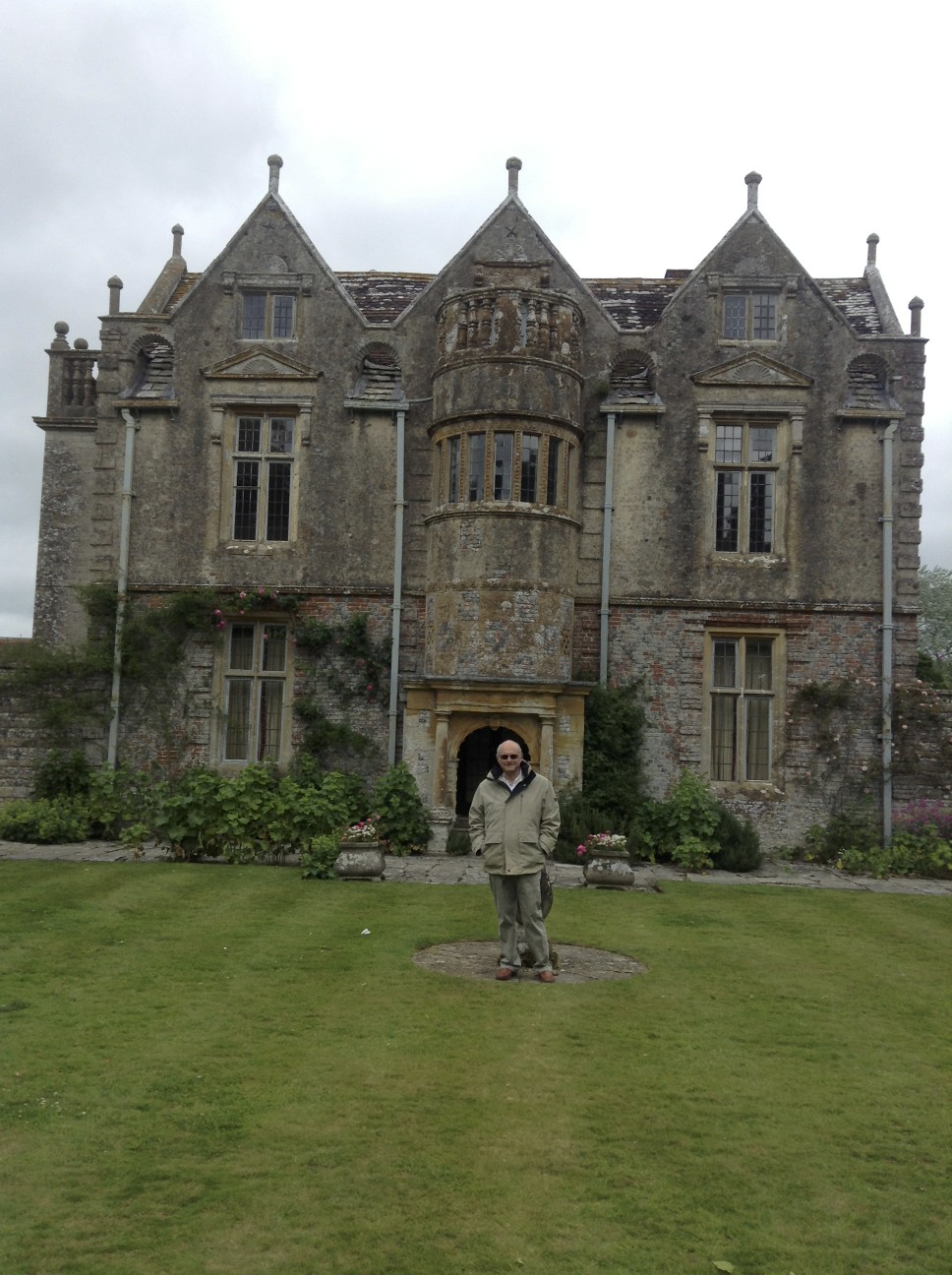 Waterston Manor
Waterston Manor
This is where Sergeant Troy gets the men drunk and Gabriel Oak with Bathsheba’s help is left to save the harvest ricks from the storm. When there was a similar event at Athelhampton this was held in the Great Hall and described by Thomas Hardy’s long time friend, tenant of Hardy’s Cottage (the designed the garden together) and author of one of the first tourist guides to Hardy’s Wessex (aided and abetted by the author himself). The old hall at Athelhampton also fits well with the place where Bathsheba takes control of the manor by dismissing the bailiff and paying her employees. There is no large hall comparable in Waterston Manor. This then would be appropriate place to remind ourselves of Bathsheba’s first meeting with her employees when she takes over the manor house of Weatherbury Farm. (See chapter 10 of
Far From The Madding Crowd).
In the 1880s Herman Lea who had come to Athelhampton to learn farming and would later form a close friendship with Hardy – he was the tenant at Hardy’s Cottage between 1913 to 1921, designed the garden with the poet there and produced a series of postcards to illustrate his novels – attended a shearing supper at Athelhampton just like that described in
Far From The Madding Crowd. The characters he met there lived only a generation later than the characters Hardy described in his novel.
Two other pieces of Hardy’s writing are closely rooted in Athelhampton: the short story The Waiting Supper and the ballad the
The Dame of Athelhall, both of which make detailed reference to the great hall, ‘the hall proper – covered with a fine open-timbered roof, whose braces purlins, and rafters made a brown thicket of oak overhead.’ In the short story Bellston, the nephew of the owner of Athelhall, meets Christine, the young girl whose love story this is, at a christening party there and leads her ‘up a spiral stair in the thickness of the wall, leading to a passage and gallery whence they could look down upon the scene below.’ There is indeed a spiral staircase enclosed by an internal wall at Athelhampton but sadly it doesn’t lead to a gallery with a view of the hall. There is also a lawn for dancing as there was at the christening party.
The Dame of Athellhall deals with the elopement of a married girl who gets cold feet, returns to Athelhall and overhears her husband already making plans to marry another. A typical Hardyan satire of circumstance where fate seems to conspire against those who deceive themselves about how their loyal will be received. According to the poem a return to Athelhall is preferable ‘To a far-off sun, to a vine-wrapt bower.’ It will be for you to decide whether you feel the same way about ‘Athelhall' after your visit.
The poem is attached below.
The Dame Of Athelhall
I
"Soul! Shall I see thy face," she said,
"In one brief hour?
And away with thee from a loveless bed
To a far-off sun, to a vine-wrapt bower,
And be thine own unseparated,
And challenge the world's white glower?
II
She quickened her feet, and met him where
They had predesigned:
And they clasped, and mounted, and cleft the air
Upon whirling wheels; till the will to bind
Her life with his made the moments there
Efface the years behind.
III
Miles slid, and the sight of the port upgrew
As they sped on;
When slipping its bond the bracelet flew
From her fondled arm. Replaced anon,
Its cameo of the abjured one drew
Her musings thereupon.
IV
The gaud with his image once had been
A gift from him:
And so it was that its carving keen
Refurbished memories wearing dim,
Which set in her soul a throe of teen,
And a tear on her lashes' brim.
V
"I may not go!" she at length upspake,
"Thoughts call me back -
I would still lose all for your dear, dear sake;
My heart is thine, friend! But my track
I home to Athelhall must take
To hinder household wrack!"
VI
He appealed. But they parted, weak and wan:
And he left the shore;
His ship diminished, was low, was gone;
And she heard in the waves as the daytide wore,
And read in the leer of the sun that shone,
That they parted for evermore.
VII
She homed as she came, at the dip of eve
On Athel Coomb
Regaining the Hall she had sworn to leave . . .
The house was soundless as a tomb,
And she entered her chamber, there to grieve
Lone, kneeling, in the gloom.
VIII
From the lawn without rose her husband's voice
To one his friend:
"Another her Love, another my choice,
Her going is good. Our conditions mend;
In a change of mates we shall both rejoice;
I hoped that it thus might end!
IX
"A quick divorce; she will make him hers,
And I wed mine.
So Time rights all things in long, long years -
Or rather she, by her bold design!
I admire a woman no balk deters:
She has blessed my life, in fine.
X
"I shall build new rooms for my new true bride,
Let the bygone be:
By now, no doubt, she has crossed the tide
With the man to her mind. Far happier she
In some warm vineland by his side
Than ever she was with me."
Revised Programme for 2020
in response to Covid-19 restrictions on public assembly
Saturday 11th– Saturday 18thJuly The 24th
THOMAS HARDY FESTIVAL and CONFERENCE
POSTPONED UNTIL 10th– 17th JULY 2021.
The Following Events are dependent on public assembly restrictions having been lifted by this time:
Saturday 24th October:
The Trumpet-Major Study Day
10.00 am The Town Hall, Dorchester, Dorset DT1 1HF
See below for details.
Saturday 24th October:
The Thomas Hardy Society Annual General Meeting
6.00 pm The Town Hall, Dorchester, Dorset DT1 1HF
Sunday 25th October 10.30 am:
A Stinsford & North Dorchester Walk – in conjunction with STAND:
www.stand-dorchester.net Led by Tony Fincham.
A full exploration of the Hardyan Countryside which would be destroyed by the proposed housing development over the downland to the north of Dorchester, relating especially to
The Mayor of Casterbridge, Far from the Madding Crowd, ‘The Three Strangers’, and much of Hardy’s poetry. Meet at Thomas Hardy’s Statute in the North Walks for an 8.5 mile via Coker’s Frome and Kingston Maurward to Waterston Ridge and Fiddler’s Green, then returning via Higher Burton to the water meadows. Refreshment stops near Higher Kingston & at The Sun Inn, Lower Burton, but taking a packed lunch may well be advisable.
Thursday 12thNovember
The Thomas Hardy London lecture.
7.30 pm: Birkbeck College, London
Dr Hugh Epstein: ‘The Nature of Awareness in Hardy’s Fiction’.
(The date for this lecture will not be definitely confirmed until September 2020).
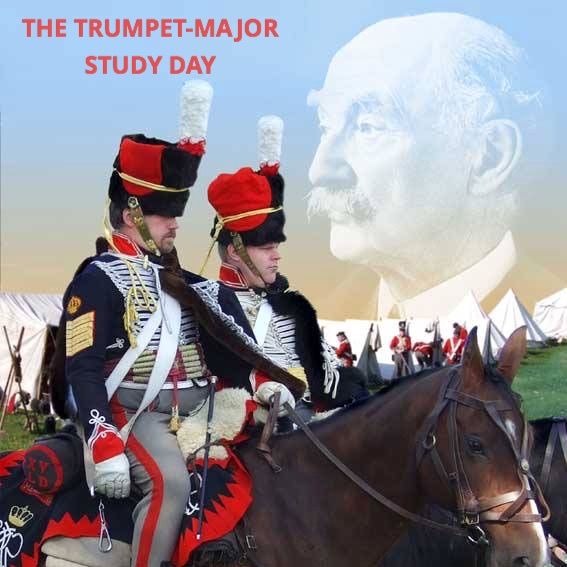
THE TRUMPET-MAJOR
A Thomas Hardy Society Study Day
Saturday, 24 October 2020 at 10.00am
The Corn Exchange, Dorchester
KEYNOTE SPEAKERS:
Professor Mary Rimmer (University of New Brunswick)
Dr Faysal Mikdadi (THS Academic Director)
Jerry Bird (Folklore Society, Dorset Natural History and Archaeological Society)
Andrew North (Military Historian) and Mark North (Dorset County Museum)
And a performance by the New Hardy Players
2020 marks the 150th anniversary of the publication of The Trumpet-Major. Hardy classed it as one of his 'Romances and Fantasies', and it was much more warmly received by his contemporaries than its predecessor The Return of the Native. It has been described as a humorous, picturesque, romantic tale based on historical fact, one of a number of works Hardy wrote revolving around the Napoleonic Wars, including The Dynasts and a number of short stories. Containing passages of both hilarity and poignancy, it records the interruption into rural routine of a military presence readying itself for battle with Bonaparte, and how this impacts upon the lives of the Lovedays, the Garlands and the Derrimans.
THE TRUMPET-MAJOR – THS STUDY DAY PROGRAMME
9.15 – 10.00: Registration
10.00-10.15: Welcome and Announcements
10.15-11.15: Mary Rimmer, 'War and its “Public” in
The Trumpet-Major'
11.15-11.30: Morning Tea Break
11.30-12.15: Faysal Mikdadi, '
The Trumpet-Major: A Happy Wessex Pastoral Romance or a Clumsy Historical Narrative?'
12.15-12.45: Mark and Andrew Worth, 'A Ridge in Wessex: South Dorset During the Napoleonic Wars'
12.45-1.15: The New Hardy Players – 'The Awkward Squad'
1.15-2.00: Lunch
2.00-2.45: Jerry Bird, '“Adieu Sweet Lovely Nancy”: Songs From the French Wars'
2.45-3.15: Andrew Hewitt, 'Time, Memory and Emotion in
The Trumpet-Major'
3.15-3.30: Afternoon Tea Break
3.30-4.00: Tracy Hayes, 'Hardy's Silly Soldiers'
4.00-4.30: Panel Discussion, '
The Trumpet-Major: Major or Minor'
4.30-5.30: Wine Reception
6.00: Thomas Hardy Society Annual General Meeting
Tickets are £20 or £10 for Students/Unwaged (to include all refreshments, a buffet lunch, and wine reception)
For any queries please contact THS Secretary Dr Tracy Hayes:
info@hardysociety.org
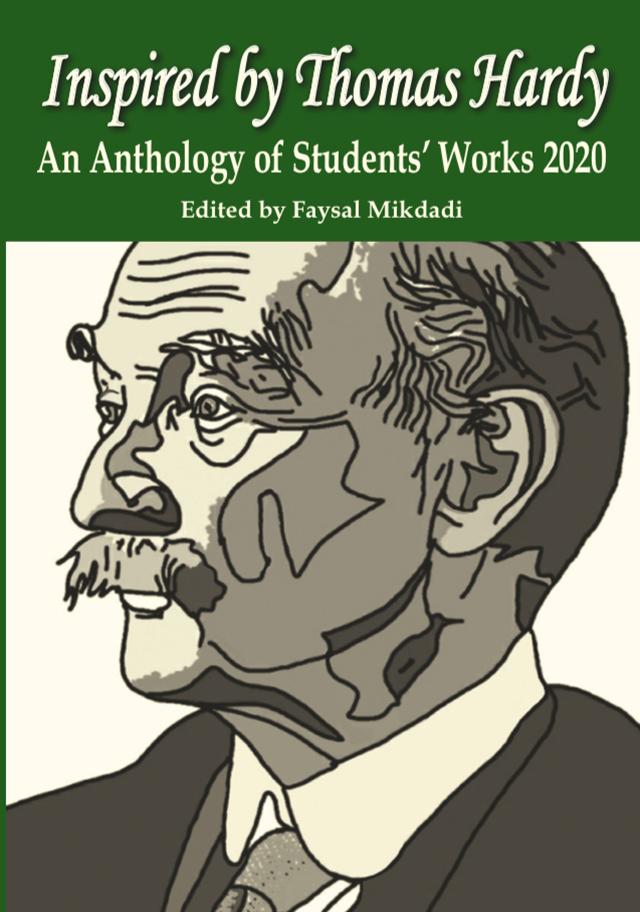
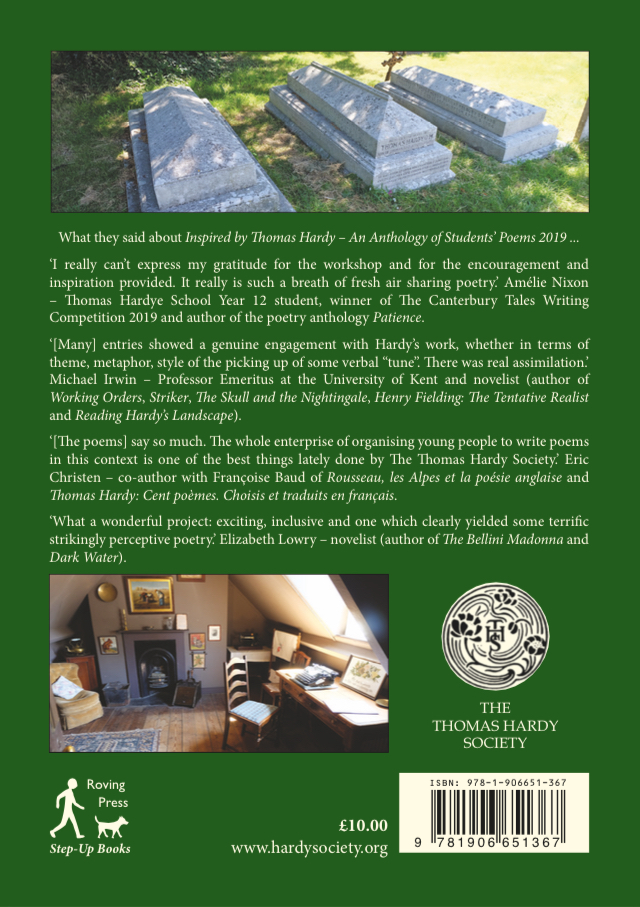 Inspired by Thomas Hardy - An Anthology of Students’ Works 2020
Inspired by Thomas Hardy - An Anthology of Students’ Works 2020
will be coming out soon. It contains poems, illustrations, photographs and some prose pieces by students from eleven schools. The students shared many poems and some prose in search for inspiration to write their own responses or to respond through art work. The 2019 Anthology was well received. The 2020 Thomas Hardy Creative Workshops were spoken of very positively by both students and their teachers. Those wishing to do so may order a copy direct from the Editor Faysal Mikdadi on
fhm481812@aol.com The book is priced at £10.00 plus £3.10 for postage. Ordered books will be dispatched with an invoice attached giving details of payment and related matters.
A reminder that entries for this competition must be received by 16th August
The Patrick Tolfree Essay Competition
Welcome to this year’s Patrick Tolfree essay competition, open to students of any academic level over the age of 18 and living anywhere in the world.
Humanity’s relationship with nature is not a new theme for students of Hardy, but the discussion is being reframed by growing awareness of the planetary scale of the impact of human activity. For 2020 the competition invites entries of between 4,000 and 5,000 words on any aspect of Thomas Hardy and the Anthropocene.
Deadline: 16 August 2020
Prize: £250 + free THS membership + publication in the prestigious Thomas Hardy Journal
Submit to: students@hardysociety.org
For more information visit: https://www.hardysociety.org/oxo/238/ths-patrick-tolfree-student-essay-competition-2020/
The competition honours the late Patrick Tolfree, avid Hardy reader and scholar, author of monographs and tireless promoter of interest in Hardy's life and works in local schools.
